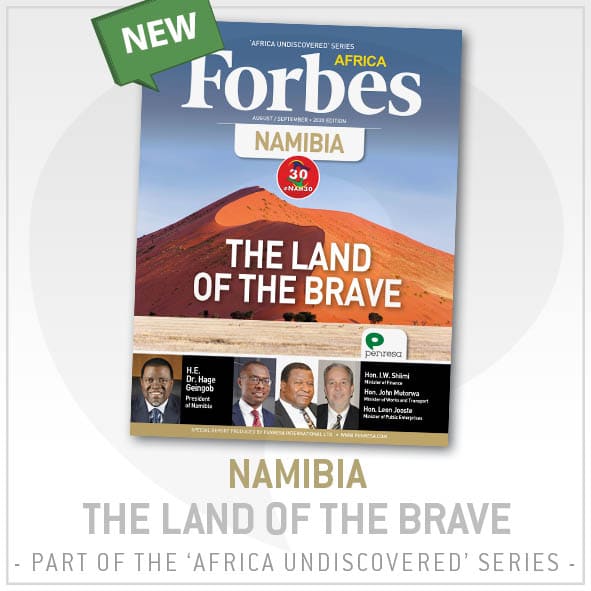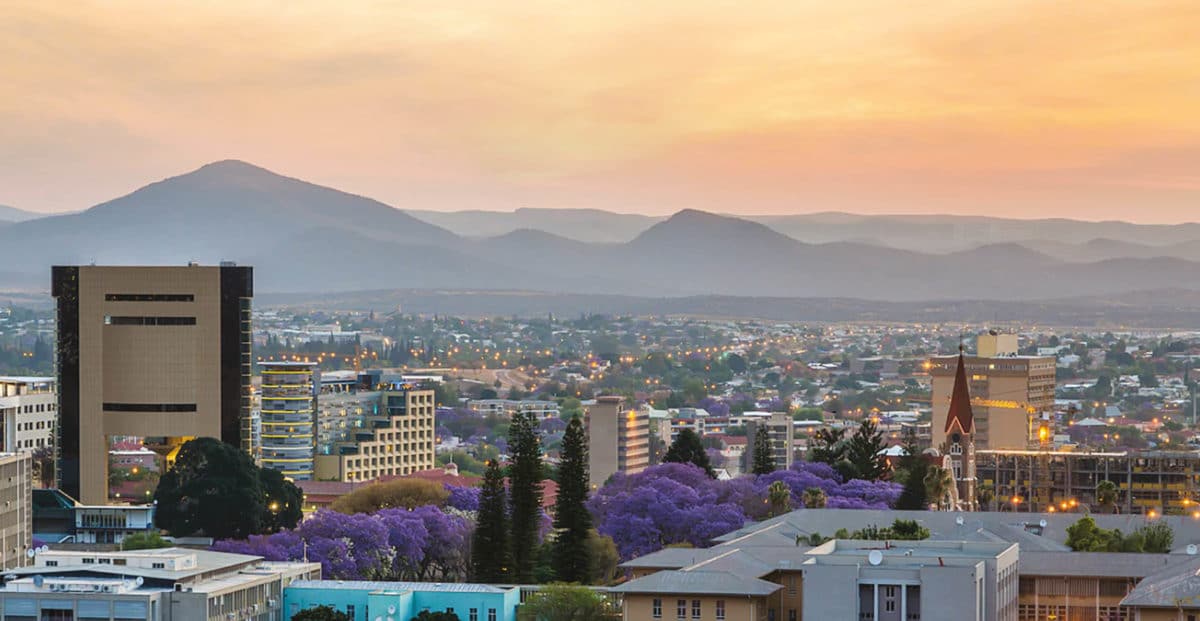On 21 March 2020, Namibia’s President Hage Gottfried Geingob was sworn in for his second term on the very same day the nation celebrated its 30 years of independence. Present at the celebration, a sure sign of Namibia’s peaceful and stable governance since independence, were the nation’s two prior presidents His Excellencies Dr Sam Nujoma and Dr Hifikepunye Pohamba, as well as the Presidents of Angola, Zimbabwe and Botswana. A grand and worthy augury for the future of continued progress, collaboration, growth and freedom for the nation.

Indeed, under President Hage Gottfried Geingob’s guidance, Vision 2030, the nation’s long term plan for industrialisation, is taking a very defined shape. Aided by the complementary Harambee Prosperity Plan fast-tracking the nation’s development, Namibia’s fifth National Development Plan (NDP5) highlights four pillars in order to target growth “In our development plan, we are trying to create an inclusive financial sector,” Hon. Carl-Hermann Gustav ‘Calle’ Schlettwein, Minister of Agriculture explains. An emphasis on education and a focus on SME development has been key to this inclusivity. “We allocate quite a few funds to our training programmes for SMEs,” states Baronice Hans, MD of Bank Windhoek. In recent years, Namibia’s Ministry of Education has highlighted the importance of vocational training. “At Letshego Bank, we are dedicated to improving livelihoods and promoting financial literacy initiatives,” claims Ester Kali, CEO of Letshego Bank. CEO of the Development Bank of Namibia, Martin Inkumbi details the Bank’s dedication in supporting the nation’s youth: “We have introduced a special lending product for targeting youth.” This, combined with a dedication to improving ease of doing business has been crucial to growing Namibia’s industries. “We have very favourable tax laws as well as lots of incentives,” confirms Patty Karuaihe-Martin, CEO of NamibRe. Vetumbuavi Mungunda, CEO of Standard Bank concurs, “Namibia has the key pillars of stability that are imperative for any business. There is political stability, social stability, a strong rule of law and a good judicial system.”
“We will live with the concept of ‘unity in diversity’ with diverse languages, cultures and religions. We live in harmony and celebrate each other with love. We welcome people from other countries with respect and care that is our valuable tradition as Namibians.”
President Hage Gottfried Geingob’s inauguration speech, March 2020
Namibia is also extremely well established within the global economy with excellent market access from an export point of view. It is a member of the Southern African Development Community (SADC) and the Southern African Customs Union and has preferential trade agreements with SADC, the Common Market for Eastern and Southern Africa (COMESA) and East African Community (EAC). With borders on Angola, Botswana, South Africa, Zimbabwe and Zambia, the role of transport and logistics in Namibia has also been key to its economic development. Strategically located half way down Namibia’s coast, Port Walvis Bay, Namibia’s largest commercial world-class deep-water port, provides the SADC region with the quickest and shortest route to Europe and North and South America and a gateway for export and import of goods by neighbouring countries. “The government has invested quite a lot of money to extend and put a container terminal in Walvis Bay so that this hub can handle more containers and enhance trade,” reveals Hon. John Mutorwa, Minister of Works and Transport.
Loading...
Awarded top position for the best roads in Africa by the World Economic Forum (WEF) for several consecutive years, Namibia’s road network has also been key in its contribution to the economic growth of other SADC countries. “We have about 47,000 km of road network of which 9,000 is bitumen road. In addition to that, we have four transport corridors, which are mostly serving our neighbouring countries and, by implication, the rest of Africa,” confirms Conrad Lutombi, CEO of Roads Authority of Namibia. Namibia’s ICT instrastructure, ranked one of Africa’s best, provides a different sort of connectivity to neighbouring countries. “Telecom Namibia also provides data connectivity to neighbouring countries via the SAT3 and WACS submarine cables,” explains Armando Perny, Acting CEO of Telecom Namibia.
As part of Vision 2030, Namibia is also determined to promote its Blue Economy Strategy 2017-2022 which addresses the development of marine mining, tourism, port infrastructure and services in an ecologically sustainable manner. . “We have a very long coastline and a very large maritime area which has a lot of potential,” states Immanuel Mulunga, MD of NAMCOR. Currently, Namibia’s fisheries contributes to about 15 % of total exports and is the country’s second biggest export earner, after mining and the third largest contributor to GDP. Namibia is also world leader in recovering diamonds from the sea. “Namibia has been a diamond mining economy for a long time,” elaborates Tom Alweendo, Minister of Mines and Energy . “We are currently exploring the sea through the development of unique technology.” Indeed, in May 2019 Namibia pioneered a distinctive form of marine diamond recovery which is also highly environmentally sustainable.
Namibia has a long history in mining and is replete with several minerals. “Namibia is a big country with a low population and lots of natural resources. Name it and we have it: minerals, fisheries, tourism, natural resources,” concludes Reinhard Gärtner, CEO of Namibia Civil Aviation Authority (NCAA).Today, due to first-class infrastructure and the ease of doing business, it is the nation’s best performing economic sector through the production of diamonds, uranium, copper, magnesium, zinc, silver, gold, lead, semi-precious stones and has the potential to lead the way towards the Fourth Industrial Revolution. “The great potential the country has as far as mining and mineral resources are concerned is evident,” claims Mark Dawe, Country Manager of B2Gold Namibia. “Everything is about re-establishing a natural environment.”
Farming also supplies nearly two-thirds of the population with an income, undeniably highlighting the importance of agriculture for Namibia’s economy. Ian Collard, CEO of Namib Mills states: “Namibia is currently a net importer, so we grow our business based on import substitution.” In February 2020, Namibia became the first African country to export red meat to the United States with state-owned Meatco’s shipment to Philadelphia of 25 tonnes of beef. “We penetrate the most advanced markets, like the US and China because we have made serious investments in our infrastructure,” declares Mwilima Mushokabanji, CEO of MeatCo.
Namibia’s horizons are limitless and today provide nation and continent with the opportunity for expansion as its policies and strategies work to crack open the nation’s immense capacity for potential and possibility.
Loading...
